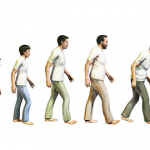“Pain should be treated as a disease in its own right,” he said. “Just like if you have hypertension or diabetes, if you have pain, it’s a disease in its own right, no matter how you got there. It should be treated that way.”
A National Pain Strategy, currently being tweaked before publication, is intended to help decrease the prevalence of pain of all kinds and to make it more feasible for people to get “timely access” to a care system that suits them.
The project that developed the strategy was organized into six workgroups on population research, prevention and care, disparities in pain experience and treatment, service delivery and reimbursement, professional education and training, and public education and communication.
Part of the problem in addressing pain care is that it is an issue infused with competing incentives. For example, opioids are needed, but there is an opioid mortality epidemic underway; there is certainly overtreatment, but there is also undertreatment, and there is a tension between primary care providers and pain specialists, Dr. Helmick said.
“The primary care providers want to do the right thing, but they don’t know where to turn for their help,” he said. “There are not a lot of resources out there that I know of.”
Thomas R. Collins is a medical writer based in Florida.
References
- ISD Scotland. General practice—Practice Team Information (PTI). 2011 Feb 22.
- Thomas E, Peat G, Harris L, et al. The prevalence of pain and pain interference in a general population of older adults: Cross-sectional findings from the North Staffordshire Osteoarthritis Project (NorStOP). Pain. 2004 Jul;110(1–2):361–368.
- Wilkie R, Tajar A, McBeth J. The onset of widespread musculoskeletal pain is associated with a decrease in healthy ageing in older people: A population-based prospective study. PLoS One. 2013;8(3):e59858.
- McBeth J, Lacey RJ, Wilkie R. Predictors of new-onset widespread pain in older adults: Results from a population-based prospective cohort study in the UK. Arthritis Rheumatol. 2014 Mar;66(3):757–767.


